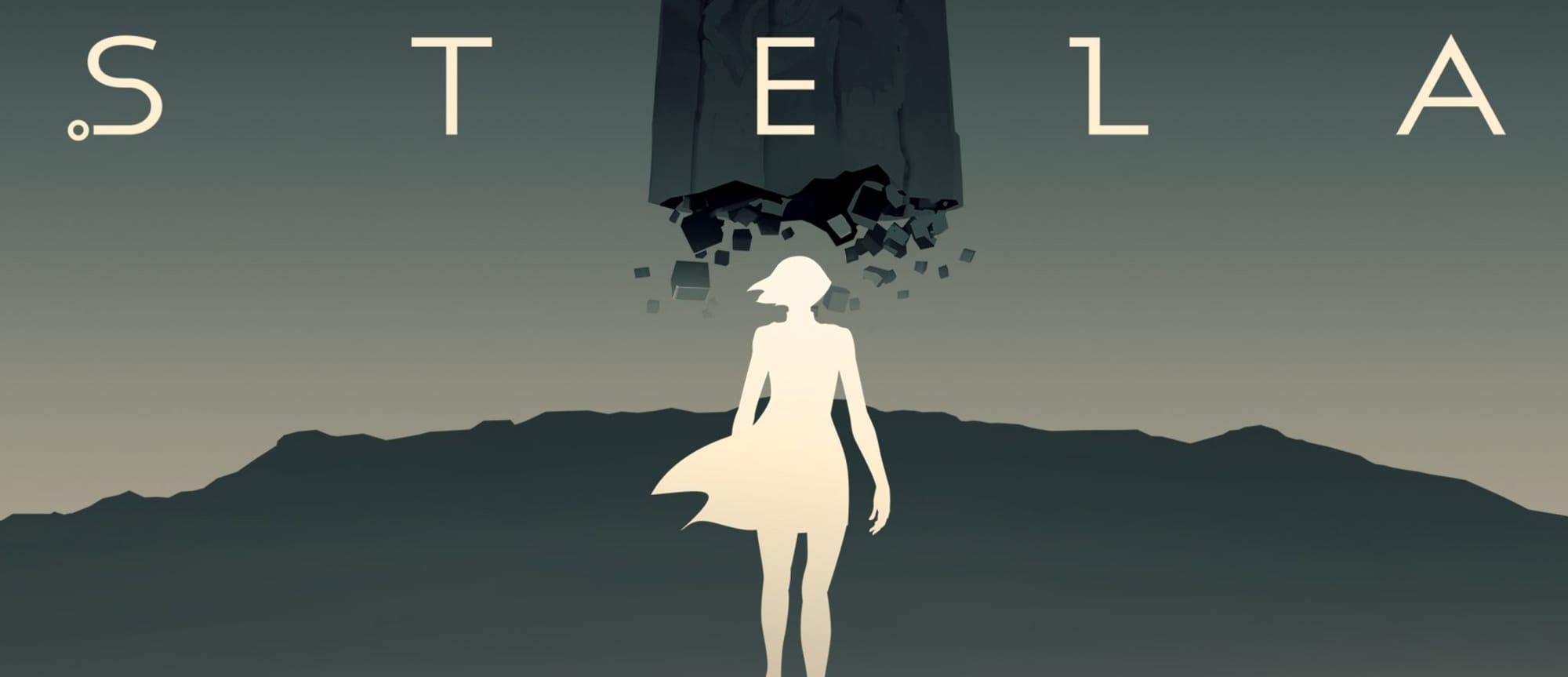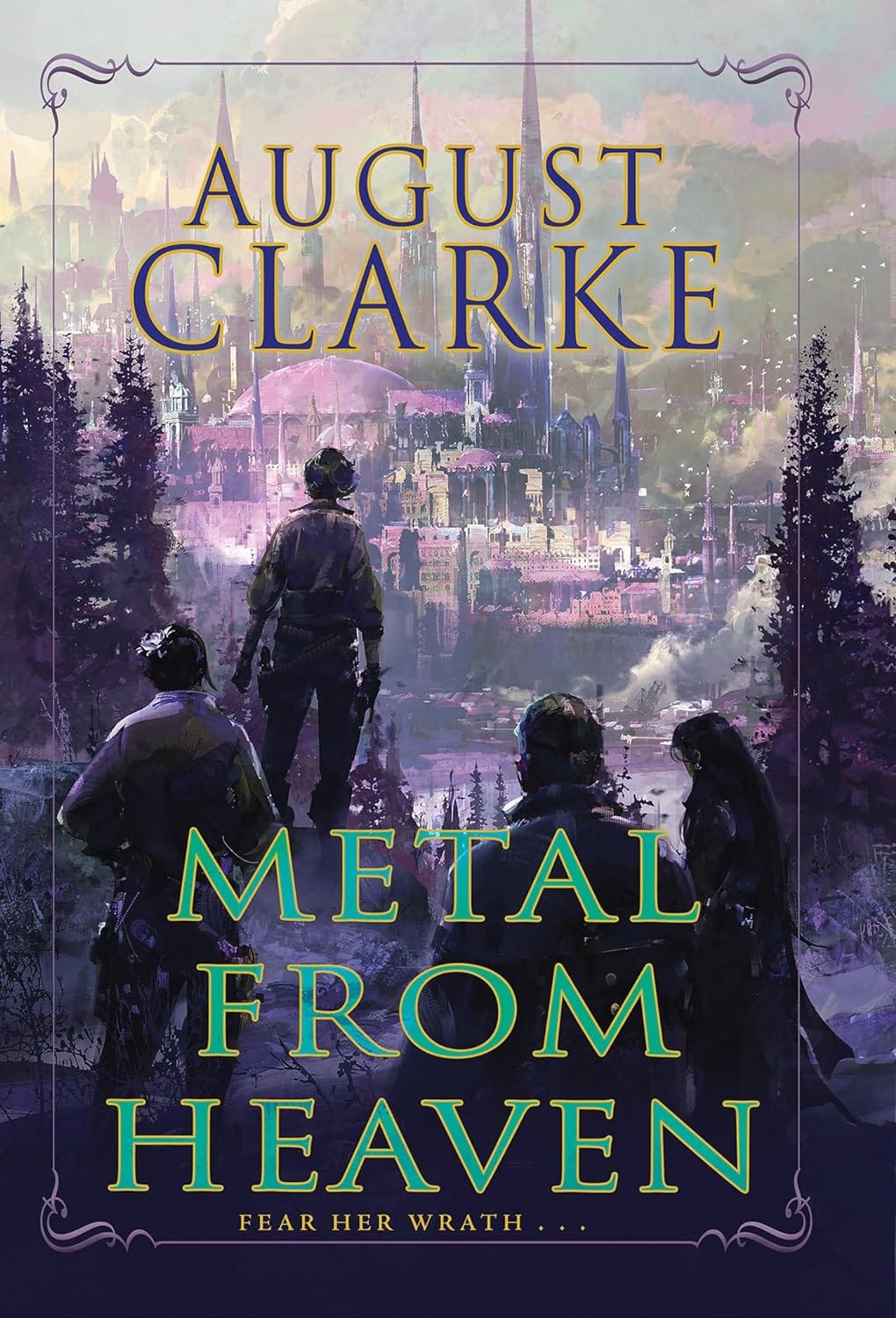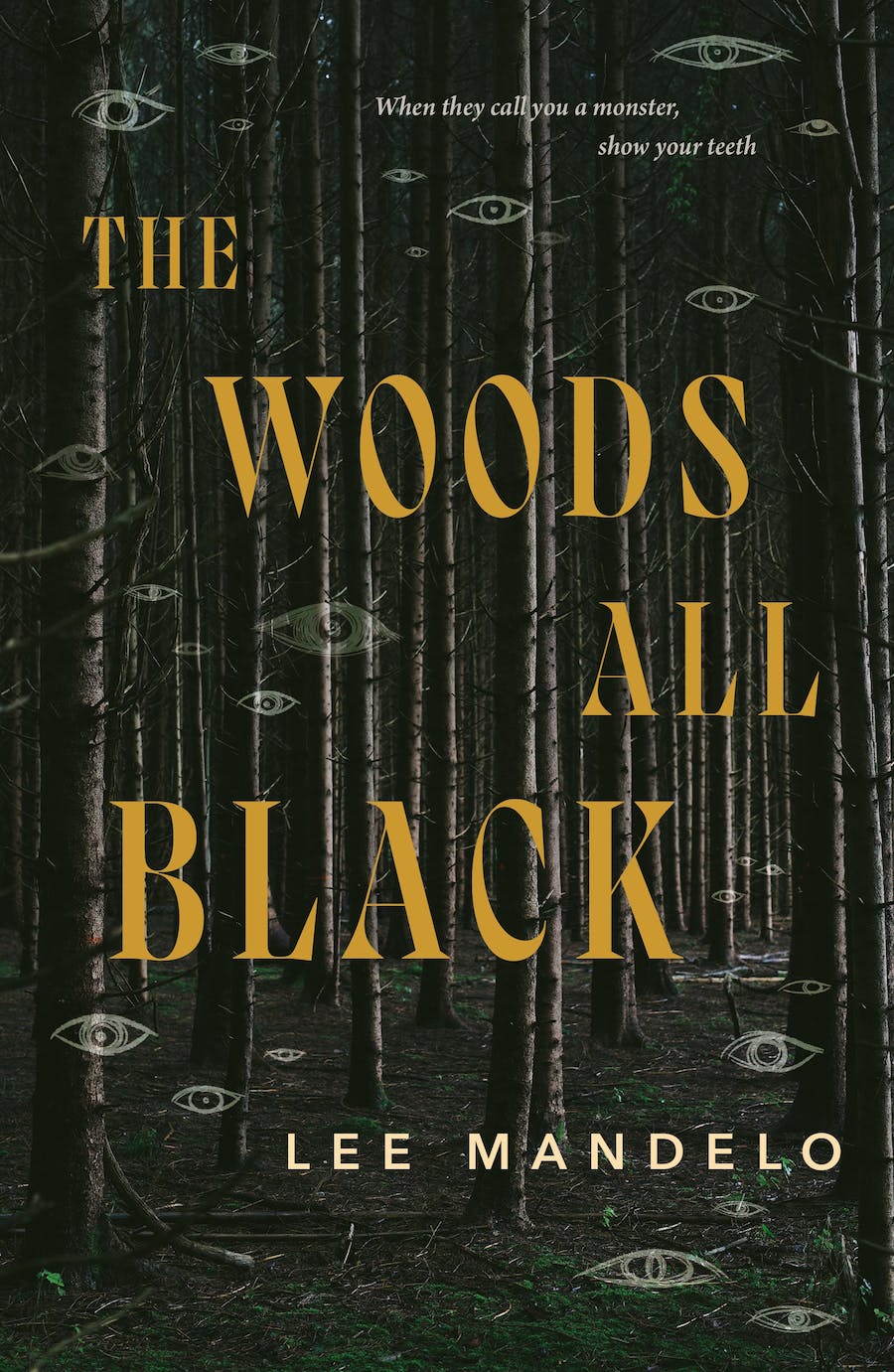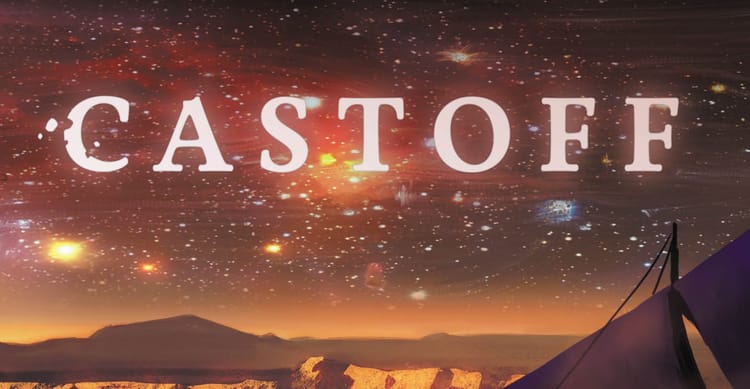Feasts, Woods, Metal

Welcome to the Stone Soup Weekly Digest! This is where I share what I'm up to and some of my favorite things from around the internet. Subscribe to Stone Soup to get this in your inbox every week.
I hope you’ve been enjoying the rich and varied contributions of this past month’s guest editors! Stone Soup will still have guest editors going forward, but also, things seem to have settled down a little for me, so I’m back at my desk and in your inbox.
As I write this, Palestinians in Gaza, the West Bank, and elsewhere continue to suffer. What is happening in those places is nothing short of genocide, under every international legal definition of that word and in the eyes of millions of people around the world. The people who are suffering in Palestine are people just like you, people who need to sleep and sit with their friends and scratch their noses and love their children and sing on their birthdays and weep when they are sad. Right now, they are starving, injured, grieving, and dying. You have neighbors around the world who need you to show up as best you can, right now, today. If you have the ability to help them, here are a few places where you can start:
- Check out Operation Olive Branch, which helps fund medical evacuations
- Donate to the Red Cross
- Donate to Doctors Without Borders
- Get involved with PCRF
- Connect with Jewish Voice for Peace
- Check out and share this round-up of verified resources from Room Magazine
- Check out and share this round-up of additional verified resources from Autostraddle
- Use Resistbot to contact your representatives
Stories About Stories: What Feasts at Night by T. Kingfisher

This year at Stone Soup, I’m interviewing the teams that make books happen! Go check out The Mess That the Editor Fixes, an interview with T. Kingfisher and the production team at Tor about how What Feasts At Night, the sequel to Locus award-winner What Moves The Dead, came to be.
Doctor Aphra Won a GLAAD Media Award!!
Congratulations to Alyssa Wong, Minkyu Jung, Natacha Bustos, Jethro Morales, Rachelle Rosenberg, and Joe Caramagna (the whole Docotor Aphra team) for bringing home a GLAAD Media Award for outstanding comic book!
CanvasRebel interviewed Liana Kangas
CanvasRebel sat down with the wonderful, incredible, talented Liana Kangas. Friends, you’ll recognize them from books like Know Your Station, Trve Kvlt, Hack/Slash Back To School, as well franchise comics in both the Star Trek and Star Wars universes. Go read about their journey, how they followed their passion, and found their people.
Alasdair Stewart Reviews: Stela
The incredibly insightful Alasdair Stuart is a pop culture genius, reviewer extraordinaire, and regular Digest contributor. Be sure to subscribe to The Full Lid for more brilliant pop culture analysis.

‘Walking Simulator’ is a bit of a pejorative for a certain type of game. Location is character and plot in these games, as you walk across an environment and build a story by progressing through it. Dear Esther, The Magnificent Trufflepigs, Everybody’s Gone to the Rapture, Inside, Stela, and Paratopic are all abjectly different experiences in different genres built around that single idea:; forward progress. The end of the game becomes a transformative experience. You get to either rest or understand or start again. Stela finds a story that finishes with all three.
As Skybox Labs’ game starts, the world is ending and all you can do is flee into the burning woods of context. The loping, baying nightmares of the forest level are an early, terrifying high spot as you sneak between their feet. When you fail, and you will, they kill you with feral enthusiasm, unbounded by the two-dimensional game play you’re trapped in and walking in and out of the screen. It’s such a smart, elegant technique and it makes them so threatening you’ll hold your breath as you creep past them. Sometimes it’ll even help.
But they are nowhere near the top of the food chain. When you’re in that level, they’re an existential threat. When they resurface later, in the snowy final levels, they’re still terrifying but out of their depth and it shows. The graboid-like burrowing wolves attracted to sound in that level are as dangerous to them as they are to you. The game’s cinematic peaks are a ‘let them fight’ moment between the two monsters and a chase between you and one of the burrowers that finishes with a cliff jump that’s the closest thing to triumph you get and is a perfect beat of white- knuckle action. You have no weapons except your brain and the game does an exceptional job of forcing you to think like a survivor. That desperate, livinge second-by-second approach gives the game it’s most startling sequence:; trapped in someone else’s war, you dart across a battlefield that doesn’t even notice or care about your presence, finding shelter as flaming arrows rain down around you. It feels huge. You feel tiny. Movement is as survival and victory, especially with such a fragile lead character.
The fragility is the point with Stela. The world is already broken, but you aren’t. A moment with one of the forest nightmares, trilling sadly to itself, the endless war above, the Cthonic destroyer you flee from in the caverns below and the shattered remnants of the polar civilization the wolves have destroyed all speak to that. This world isn’t dying, it’s dead and it’s just taking a while to realize. You are literally and metaphorically running between the wreckage, trying to find something bigger. You do. The world still ends. You don’t. You carry what you witness out into whatever’s next and after a while you realize you don’t have to run anymore.
Stela is difficult (don’t play it on a Switch in bright sunlight, oddly enough) complex and simple all at once. It’ll haunt you in the best of ways and it’s out now for Switch, Xbox, PC and Apple Arcade.
I’m Reading: Metal From Heaven by August Clarke

He who controls ichorite controls the world.
A malleable metal more durable than steel, ichorite is a toxic natural resource fueling national growth, and ambitious industrialist Yann Chauncey helms production of this miraculous ore. Working his foundry is an underclass of destitute workers, struggling to get better wages and proper medical treatment for those exposed to ichorite’s debilitating effects since birth.
One of those luster-touched victims, the child worker Marney Honeycutt, is picketing with her family and best friend when a bloody tragedy unfolds. Chauncey’s strikebreakers open fire.
Only Marney survives.
A decade later, as Yann Chauncey searches for a suitable political marriage for his ward, Marney sees the perfect opportunity for revenge. With the help of radical bandits and their stolen wealth, she must masquerade as an aristocrat to win over the calculating Gossamer Chauncey and kill the man who slaughtered her family and friends. But she is not the only suitor after Lady Gossamer’s hand, leading her to play twisted elitist games of intrigue. And Marney’s luster-touched connection to the mysterious resource and its foundry might put her in grave danger – or save her from it.
Barnes & Noble | Bad River Website | Find an Indie Bookstore
Featured New Release: Woods All Black by Lee Mandelo
Last month I published Unsanitary Work, an interview with the people who made The Woods All Black. Now, you can read the book yourself!

The Woods All Black is equal parts historical horror, trans romance, and blood-soaked revenge, all set in 1920s Appalachia. Leslie Bruin is assigned to the backwoods township of Spar Creek by the Frontier Nursing Service, under its usual mandate: vaccinate the flock, birth babies, and weather the judgements of churchy locals who look at him and see a failed woman. Forged in the fires of the Western Front and reborn in the cafes of Paris, Leslie believes he can handle whatever is thrown at him—but Spar Creek holds a darkness beyond his nightmares.
Something ugly festers within the local congregation, and its malice has focused on a young person they insist is an unruly tomboy who must be brought to heel. Violence is bubbling when Leslie arrives, ready to spill over, and he'll have to act fast if he intends to be of use. But the hills enfolding Spar Creek have a mind of their own, and the woods are haunted in ways Leslie does not understand.
The Woods All Black is a story of passion, prejudice, and power — an Appalachian period piece that explores reproductive justice and bodily autonomy, the terrors of small-town religiosity, and the necessity of fighting tooth and claw to live as who you truly are.
Barnes & Noble | Bad River Website | Local Library | Find an Indie Bookstore
If you’re a paying subscriber, come by the Stone Soup Supper Club and let me know how you’re doing!
—Gailey






Member discussion